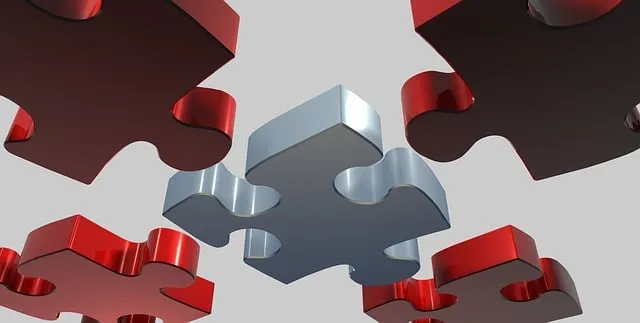Home slab foundation issues arise from various causes like poor construction, soil shifts, age, or earthquakes. Symptoms include cracks, uneven floors, and stuck doors/windows. Early detection is crucial for effective repair. Foundation Solutions experts provide customized solutions addressing the root cause to guarantee long-term stability and structural integrity. Modern non-invasive methods like hydraulic jacking and polymer injection offer cost-effective, environmentally friendly repairs without extensive excavation. Choosing the right Foundation Solutions—from underpinning and piering to concrete repairs—is vital for preventing future damage and maintaining home value. Regular inspections and proactive care are essential for robust foundation solutions.
“Discovering reliable home slab foundation repair is crucial for any homeowner. This comprehensive guide navigates the intricate world of foundation issues, exploring common causes from settlement to shifting soil. We delve into a spectrum of foundation repair methods, from non-invasive technologies to traditional techniques, helping you choose the optimal solution. Learn about long-term maintenance and prevention tips to safeguard your home’s structural integrity and ensure stability for years to come, offering peace of mind and enhancing property value through effective foundation solutions.”
Understanding Home Slab Foundation Issues

Home slab foundation issues can arise from various factors, including poor initial construction, shifting soil conditions, old age, or damage caused by unforeseen events like earthquakes or heavy machinery nearby. These problems often manifest as cracks in the foundation, uneven floors, sticking doors or windows, and visible gaps around doors and windowsills. Identifying these signs early is crucial for effective foundation repair.
Once a slab foundation problem is suspected, seeking professional assistance from reliable foundation solutions experts becomes essential. They can perform thorough inspections to pinpoint the exact cause of the issue. With advanced diagnostics, these professionals offer tailored solutions that address the root cause, ensuring long-lasting stability and structural integrity for your home.
Common Causes of Foundation Damage

Foundation damage can stem from a variety of causes, many of which are preventable with proper maintenance and timely intervention. One of the primary culprits is ground water intrusion, leading to hydrostatic pressure that pushes against the foundation walls. This is particularly common in areas with high water tables or poor drainage. Over time, this consistent pressure can cause cracks to form and widen, compromising the structural integrity of your home.
Another significant factor is soil movement due to changes in moisture content. Clay-rich soils, for instance, expand when they become moist and contract when they dry out, leading to heave and settle effects on the foundation. Tree roots can also cause damage by drying out the soil or piercing the foundation walls, especially in older homes. Foundation solutions often involve addressing these issues through advanced repair techniques, such as underpinning, piering, or installing a new slab foundation.
Non-Invasive Foundation Repair Methods

Non-invasive foundation repair methods offer a modern and effective approach to addressing structural issues without causing significant disruption to your property. These innovative solutions are ideal for those seeking minimal excavation and quick restoration, especially in urban areas where traditional digging can be challenging. One such method involves the use of hydraulic jacks and piering systems. This process starts by installing metal piers or piles at strategic locations beneath the foundation. Hydraulic jacks then raise and stabilize the slab, addressing settling or shifting issues without breaking ground.
Another popular technique is polymer injection, which fills cracks and gaps with a flexible, durable material. This method not only prevents further damage but also acts as a barrier against moisture intrusion, a common cause of foundation problems. Foundation solutions like these are designed to be efficient, cost-effective, and environmentally friendly, ensuring your home’s structural integrity while minimizing the impact on your surroundings.
Traditional Foundation Repair Techniques

In traditional foundation repair, a variety of techniques have been employed over the years. One common method involves underpinning, where additional support is added beneath the existing slab to stabilize it. This often includes installing steel beams or piles to reinforce the structure. Another widely used approach is underpinning and jacking, where the slab is lifted and supported by jacking devices while new foundation elements are constructed underneath.
These conventional methods have proven effective for many structures but may not always be the most efficient or cost-effective solution. As such, modern foundation solutions offer innovative repair techniques tailored to specific issues like settlement cracks, heave damage, or uneven slabs. These advanced methods often provide longer-lasting repairs and can be less disruptive than traditional approaches, ensuring the integrity of the building while minimizing structural disturbances.
Choosing the Right Foundation Solution

When it comes to repairing a home’s slab foundation, choosing the right solution is paramount for long-lasting results. Homeowners should first assess the extent of the damage and the specific issues afflicting their foundation, such as settlement cracks or uneven floors. This initial evaluation guides the selection of suitable Foundation Solutions.
Modern options range from conventional concrete repairs to advanced technological interventions like underpinning and piering. For instance, steel piers can effectively lift and stabilize sinking slabs, while underpinning involves installing a network of support beams beneath the foundation. Selecting the right Foundation Solutions not only ensures structural integrity but also minimizes future damage, maintaining the value and safety of your home.
Long-Term Maintenance and Prevention Tips

Maintaining your home’s slab foundation is an investment in its longevity and structural integrity. Long-term foundation health requires proactive care, starting with regular inspections to identify any signs of damage or movement. Addressing issues early through professional evaluation and non-invasive methods like piecing and re-leveling can prevent more costly repairs down the line.
Prevention also involves addressing moisture issues, as water can erode soil and put pressure on foundation walls. Proper drainage around your home is key; ensure downspouts direct water away from the slab, and consider installing a perimeter drain system to divert water. Additionally, maintaining proper air circulation under the slab can mitigate humidity-related problems that may contribute to foundation degradation. Incorporating these maintenance practices alongside timely professional inspections offers robust foundation solutions for your home’s enduring security.
